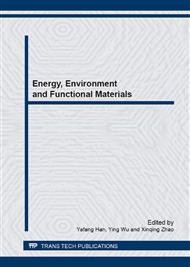p.144
p.152
p.159
p.164
p.171
p.176
p.184
p.195
p.198
A Life Cycle Inventory Case Study for Marble Mining in China
Abstract:
The goal of this paper is to conduct a life cycle inventory (LCI) case study for marble mining in China. The scope focuses on the whole life of marble mining. The functional unit is “per cubic meter of marble block”. The LCI data, including the input of energy and natural resources and the output of pollutant emissions, were collected on-site. The LCI results show that if the waste quarries could be recovered after the exploration, the environmental damages from the marble decorative materials would be much less. The environmental impacts of fresh water consumptions are also discussed. Some suggestions and recommendations on how to improve the environmental performance, at the same time the marble materials can be produced to support the increasing sales, are made. In the future, the land use and the mine recovery should be discussed.
Info:
Periodical:
Pages:
171-175
Citation:
Online since:
April 2014
Authors:
Keywords:
Price:
Сopyright:
© 2014 Trans Tech Publications Ltd. All Rights Reserved
Share:
Citation:


